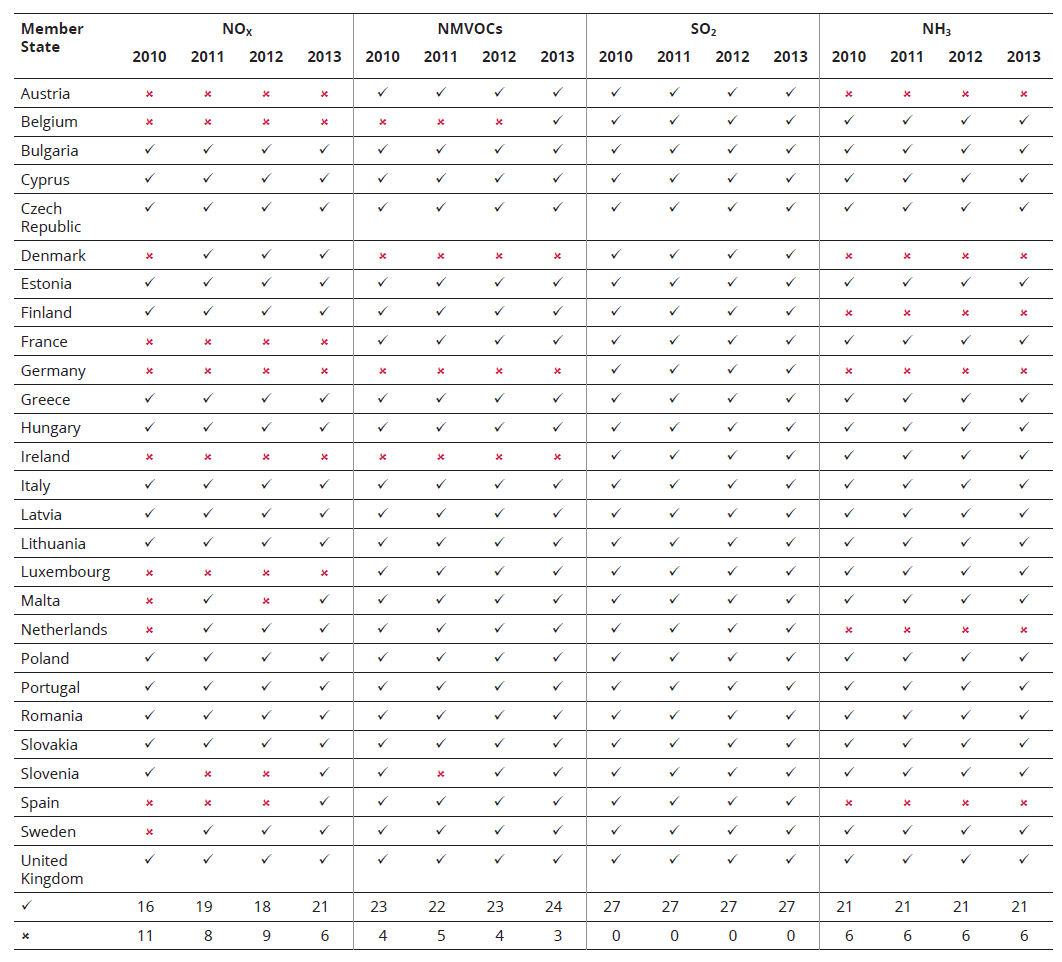Under the National Emission Ceilings (NEC) Directive, EU Member States have individual air pollutant emission limits, or 'ceilings', for sulphur dioxide (SO2), nitrogen oxides (NOx), ammonia (NH3) and non-methane volatile organic compounds (NMVOC). As of 2010, Member States should not have exceeded their emission ceilings, but the EEA report 'NEC Directive status report 2014', which includes preliminary data for 2013 and summarises data for 2010-12, confirms that a number of countries did so for these years.
The four pollutants addressed in the directive harm human health and the environment, causing respiratory illnesses, acidifying soil and surface waters, and damaging vegetation.
Key findings
- Ten Member States exceeded at least one ceiling in 2013. Germany was the only country that exceeded three of the four emission ceilings (NOx, NMVOCs and NH3), while Austria (NOx and NH3), Denmark (NMVOCs and NH3) and Ireland (NOx and NMVOCs) exceeded two ceilings in 2013.
- The following six Member States - Austria, Belgium, France, Germany, Ireland and Luxembourg - exceeded their NOx emission ceilings in all years from 2010-2013. In 2013, Germany and France reported the highest exceedances of NOx limits with 218 kilotonnes and 180 kilotonnes, respectively. In percentage terms, Luxembourg (41%) and Austria (32%) exceeded their NOx emission ceilings by the greatest amount in 2013.
- Emissions from road transport is one of the main reasons for the large number of NOx exceedances. NOx reductions from the road transport sector have been lower than originally anticipated over the last two decades, partly because transport has grown more than expected, and partly owing to the increased number of diesel vehicles producing higher NOx emissions than petrol-fuelled vehicles. It is also an issue that ‘real-world emissions’ often exceed the permitted test-cycle emissions used for certification of vehicles complying with Euro standards. This is particularly true for light-duty diesel vehicles.
- Six Member States also have persistent problems meeting their national emission limits for NH3. Austria, Denmark, Finland, Germany, Netherlands and Spain all breached the ceilings for four years running (2010-13).
- Almost 95% of NH3 emissions stem from agriculture, mainly from the use of fertilisers and the handling of animal manure. NH3 emissions have decreased since 1990, but not to the same extent as the other pollutants covered by the NEC Directive.
- The ceilings for sulphur dioxide (SO2) emissions were not exceeded by any Member State between 2010 and 2013.

'v' indicates that the emission ceiling has been attained; 'x' indicates the ceiling has not been attained.
Years 2010, 2011 and 2012: final data; year 2013: provisional data.
Under the Gothenburg Protocol, inventory adjustment applications for emissions from Germany (for NOX) and Denmark (for NH3) were accepted by the EMEP Steering Body in 2014. However, emission data reported under the NECD used in this report are unadjusted.
See table 2.2 on page 17-18 of the report for specific figures on ceilings and emissions per country and year.
More information
Document Actions
Share with others